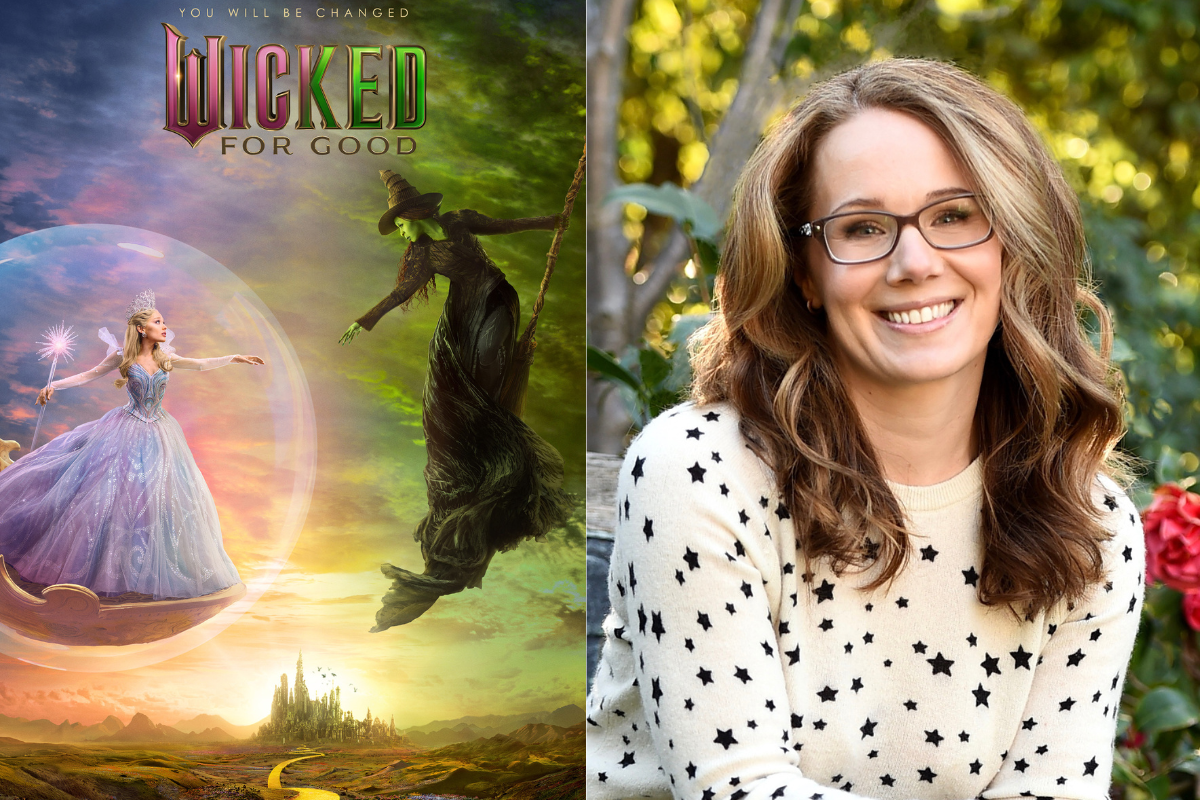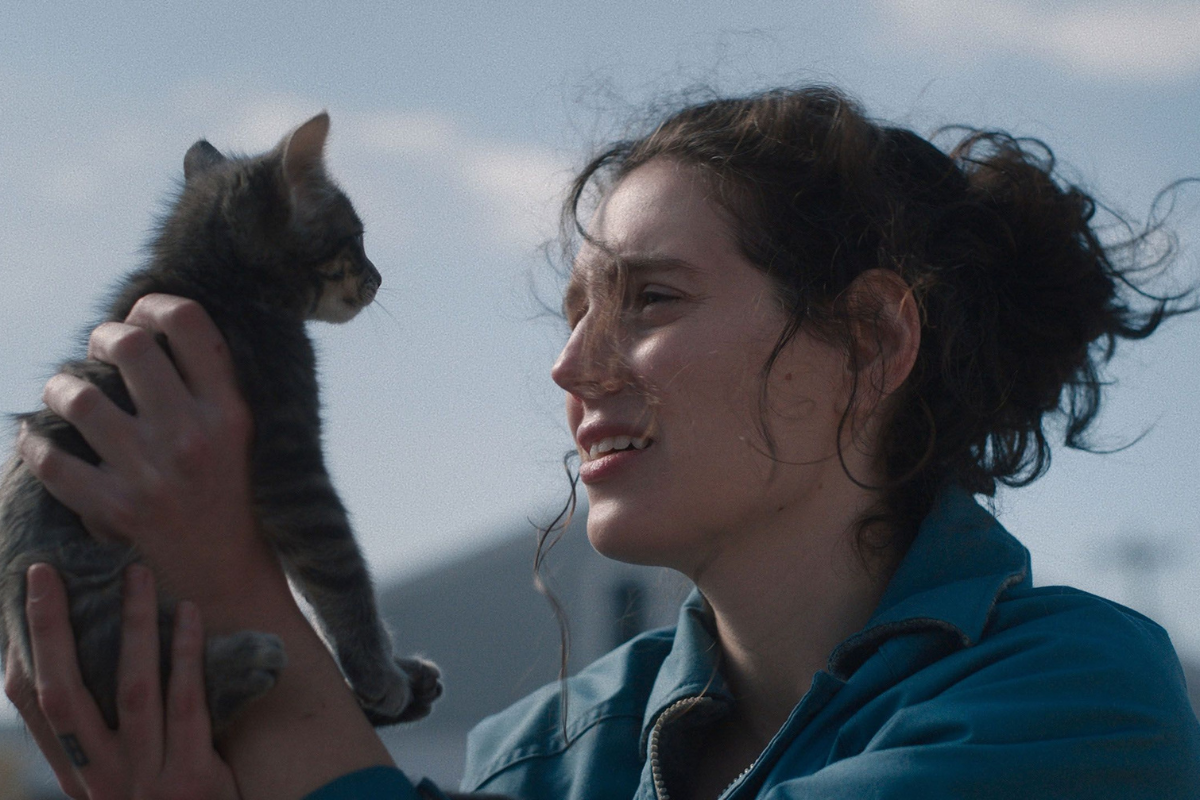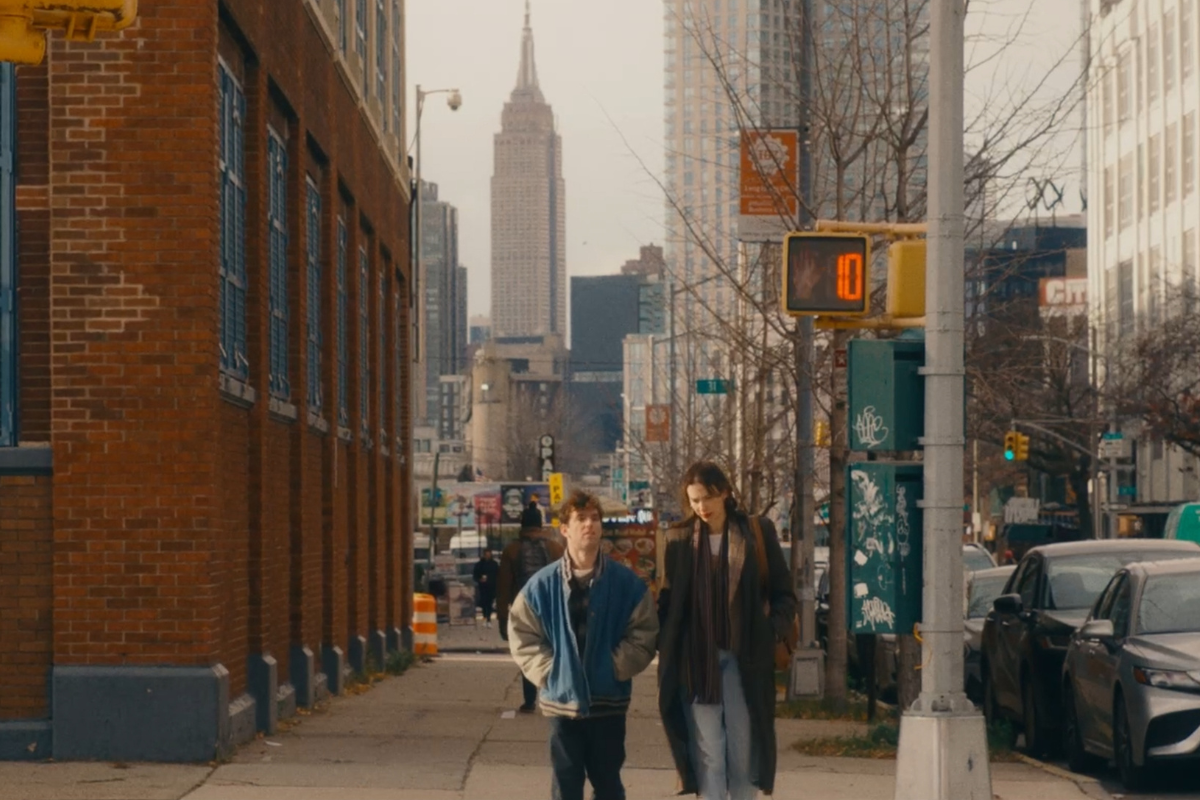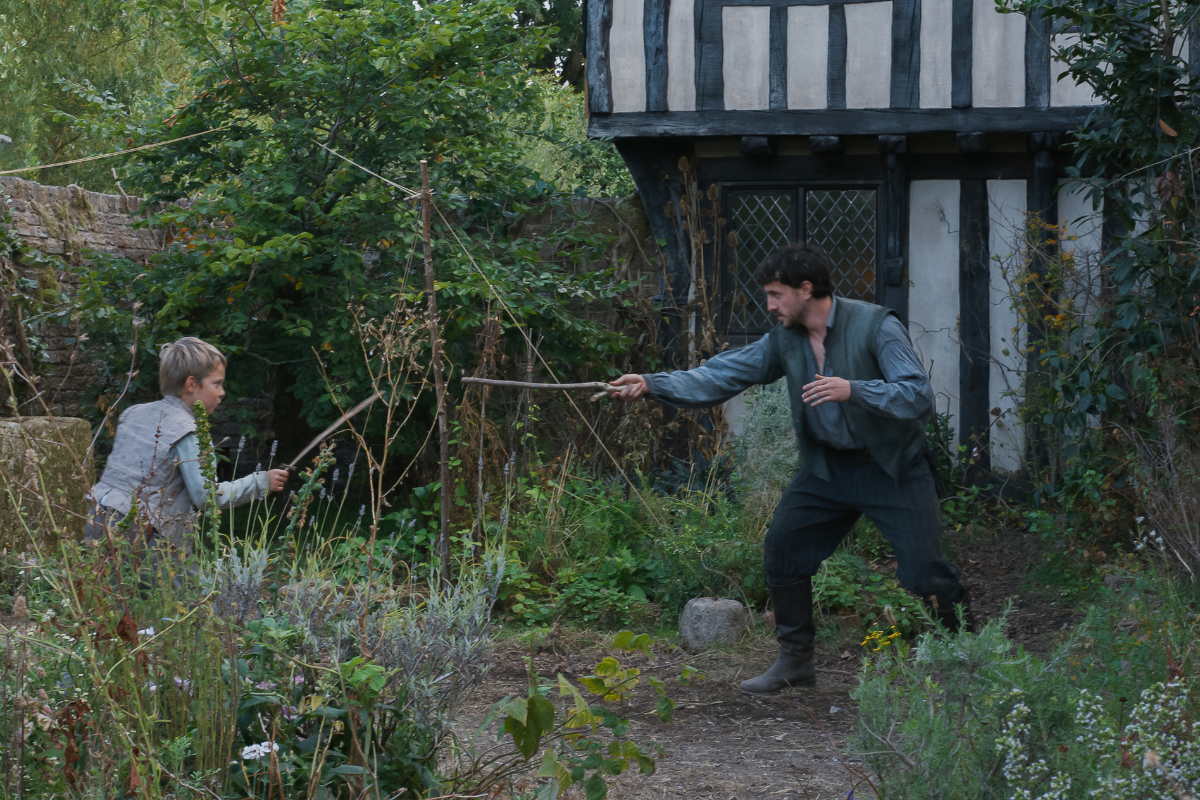The Polyphonic Nature of a Strong Story: Joachim Trier and Eskil Vogt Discuss ‘Sentimental Value’
Joachim Trier and Eskil Vogt believe in the transcendent nature of art and recently spoke with Script about what makes a story universal and why ‘Sentimental Value’ is polyphonic.
Award winning writer/director Joachim Trier’s (The Worst Person in the World, Thelma) latest film Sentimental Value examines how homelife is the genesis of personality, how being an artist can serve as emotional liberation, and the benefits of the deep bonds of sisterhood. The film, written with Trier’s longtime friend and collaborator Eskil Vogt (Blind, The Innocents) has a house at its center. Not just a house, a home. With its lingering memories and the enduring spirits of previous residents, by necessity the place conveys humanlike attributes because its makers and inhabitants have been people, and this environment affects the current Borg family members in different ways. Trier notes:
“The house is a witness of the unspoken. It’s also a witness of the 20th century, which we find out affected this family, particularly during WWII.”
Sentimental Value revolves around two sisters, Agnes and Nora, and the static relationship they have with their father Gustav, who’s a respected film director. The film has won numerous awards, including Grand Prize at the Cannes Film Festival this year. Trier and Vogt believe in the transcendent nature of art and recently spoke with Script about what makes a story universal and why Sentimental Value is polyphonic.
Hjem (Home)
Trier and Vogt are both natives of Norway and are fluent in English. While at school in London, the short films that Trier and Vogt produced were all in English. Yet, their work is distinctly Norwegian. Joachim believes this helps it translate universally.
Joachim Trier: The specificity of one thing is what makes it unanimously interesting ideally in art. I believe in the humanism of character curiosity and empathy. I believe that cinema can travel. That’s the good thing about movies.
Sonya Alexander: What are distinct aspects of Norway that cinematographer Kasper Tuxen is able to capture?
Joachim: The hills. The light. It's a northern city that has very light summer nights. It’s also by a fjord, by the sea, so you have seagulls that make weird noises all the way into the center of the city. There are tramways…there’s all these cultural and emotional things.
Sonya: In the movie, the Borg’s family home in Oslo reflects aspects of its inhabitants. How does the house affect them?
Joachim: There’s one moment where the young sister, having cleaned up the house, invites the older sister over. The older sister has been avoiding the whole thing about their moving out. She’s maybe more independent, more autonomous. The young sister says, “It feels strange to sell this. I always wished that me and my family, my child and husband, could live here.” And the older sister says, “You want to live here?” She has complete skepticism. As it’s a completely foreign idea for her. The house also represents the dichotomy of emotional entanglements. Agnes has nostalgia and joyful feelings, while Nora rejects those feelings towards the house, which I think is at the core of the story.
Eskil Vogt: It was difficult to find a house to cast. It wasn’t as easy as you’d think…! [laughs]
Joachim: What Eskil and I have always done, which I think is a good thing, is to write movements truthfully. You’ve got to have a sense of space and timing to really make a scene work. To be space specific when you write is very interesting, particularly in a story like this. When I found the house, I brought Eskil in to rewrite with the house in mind. It’s so important. Eskil also understands that we write for the images on the screen. He’s a director himself and has made films wonderfully without me. It is a real luxury to have a co-writer that understands space and movements. We tailored the script for this specific house.
Polyphonic Structure
Trier blends many influences into his own unique style. In Sentimental Value, there’s a nod to Yasujirō Ozu’s internal framing but Trier attunes it to a Norwegian setting, as well as a hat tip to Cassavetes’ Opening Night. The visual landscapes and soundscapes are contributors to the characters’ internal lives. There are three main characters in this story, but they don’t necessarily reflect Trier and Vogt’s family. What they care about when they write are themes.
Joachim: The themes of our films are very often personal. Since we’re both parents now, Eskil and I often talk about what was transferred from our grandparents or parents to us that’s unspoken? What were those energies, those things, that inflicted us in some way and didn’t have a real language? Can we show that in a movie? What will we transfer to our children? Asking those personal questions tremendously affects the characters that we write even though it’s fiction.
Eskil: Also, Joachim and I tend to agree that good dialogue isn’t necessarily about word choice. The subtext and the drama is what we aim for.
Sonya: Joachim, I read that you said this film was your most polyphonic experience. How so?
Joachim: We talked about the word polyphony or polyphonic because the story’s multi-character. One of the things I’m most proud of, from the writing to the editing, is that we’re balancing these characters towards each other so that they make a whole as a story. That was fun but also difficult at times in terms of everything. From the structure of the screenplay. How one story takes over another and loops back to another character. The surprise of the younger sister being such an important pivotal character. How do we play Elle Fanning’s wonderful Rachel Kemp into it with wonderful comedic aspects, but still give her a purpose dramatically? All of that balancing act almost has a musical aspect to it.
Sonya: You’ve both worked with Renate Reinsve before. How did you know she was the right person to play Nora?
Joachim: I got to know her very well from The Worst Person in the World. One of the first things Eskil and I agreed on in the writing room was an idea of sisterhood and an idea of Renate. That was something to believe in before we had a story. [laughs] We both really like her. She has a ridiculously wide range. She can be the funniest, the silliest and she can be deeply, emotionally dramatic and truthful. She fights like crazy to get to a place where she’s in the pocket, where she believes in it.
At this point, I feel we have real trust to try things and do variations on scenes. That’s something we talk about as well as co-writers. Eskil is a much better writer than me…he always has the final touch on the actual script. He’s also very humble to the fact that we will rewrite during some rehearsals. There will be moments of change. Maybe I’ll improvise something on set. We all know that. We all build towards the shoot, towards the performance, knowing a good actress like Renate will come in and contribute life to it and make it real.
Sonya: How do you feel telling a film within a film contributes to the narrative about artists?
Joachim: It gave us the language within the language. Where this father has this paradox of being so incapable and clumsy in his social life but has such interesting human beings and emotions in his art. He gave us an iconic, complex father to deal with in the story.
Eskil: We weren’t drawn to the meta aspect from the start. We were a little bit resistant to it. But the scenes form a chorus. Everything comes together in the art.
Sonya: I read that part of your writing process is listening to music. What did you listen to while working on this?
Joachim: A lot…! For music, sometimes you just listen to movie stuff and that makes its way into the film. What bookends the film are the wonderful American musician and composer Terry Callier’s “Dancing Girl” and British musician Labi Siffre’s "Cannock Chase”. They both have a similar soulful folk sound.
Eskil: We have this process when we start working. One of the first things we do before we know what film we’re going to make is to create a playlist. We put things in there intuitively and that keeps evolving with the project. Sometimes the songs make it into the film. Sometimes they help us get into the mood of the scene or whatever we’re working on.
Sonya: How long have you guys been writing together?
Joachim: Forever!
Eskil: We were friends before we started working together. We shared the dream of becoming filmmakers. When Joachim did his first short, I just helped with everything. There wasn’t really a script for that one, but I helped to draw the storyboards. That was the first collaboration. That was in the mid-90s and we’ve been working together ever since.
Joachim: People sometimes say, “You’re such film buffs. How do you use that when you work?” It’s the energy, the spirit, of someone creating something uniquely different from what we do that can still give us that rush of “we love movies.”
Sonya: Do you feel that artistic temperament and residual trauma are often tied together?
Joachim: Yes, but in unexpected and indirect ways. Whether you are becoming an artist to find peace from stuff. Or whether it’s an ongoing process of questioning and wondering about the meaning of it all. By the time most people become creative people in their teens or twenties, they’ve had to struggle in some capacity. I think deeper thematics arrive from taking things seriously, not thinking things are so swell and brilliant. But it's very comforting to write with someone and have a good friend as a collaborator. I find that beautiful.
Neon’s Sentimental Value stars Renate Reinsve, Stellan Skarsgård, Inga Ibsdotter Lilleaas, and Elle Fanning and opens in limited release in Theaters on November 7.
Sonya Alexander started off her career training to be a talent agent. She eventually realized she was meant to be on the creative end and has been writing ever since. As a freelance writer she’s written screenplays, covered film, television, music and video games and done academic writing. She’s also been a script reader for over twenty years. She's a member of the African American Film Critics Association and currently resides in Los Angeles.







